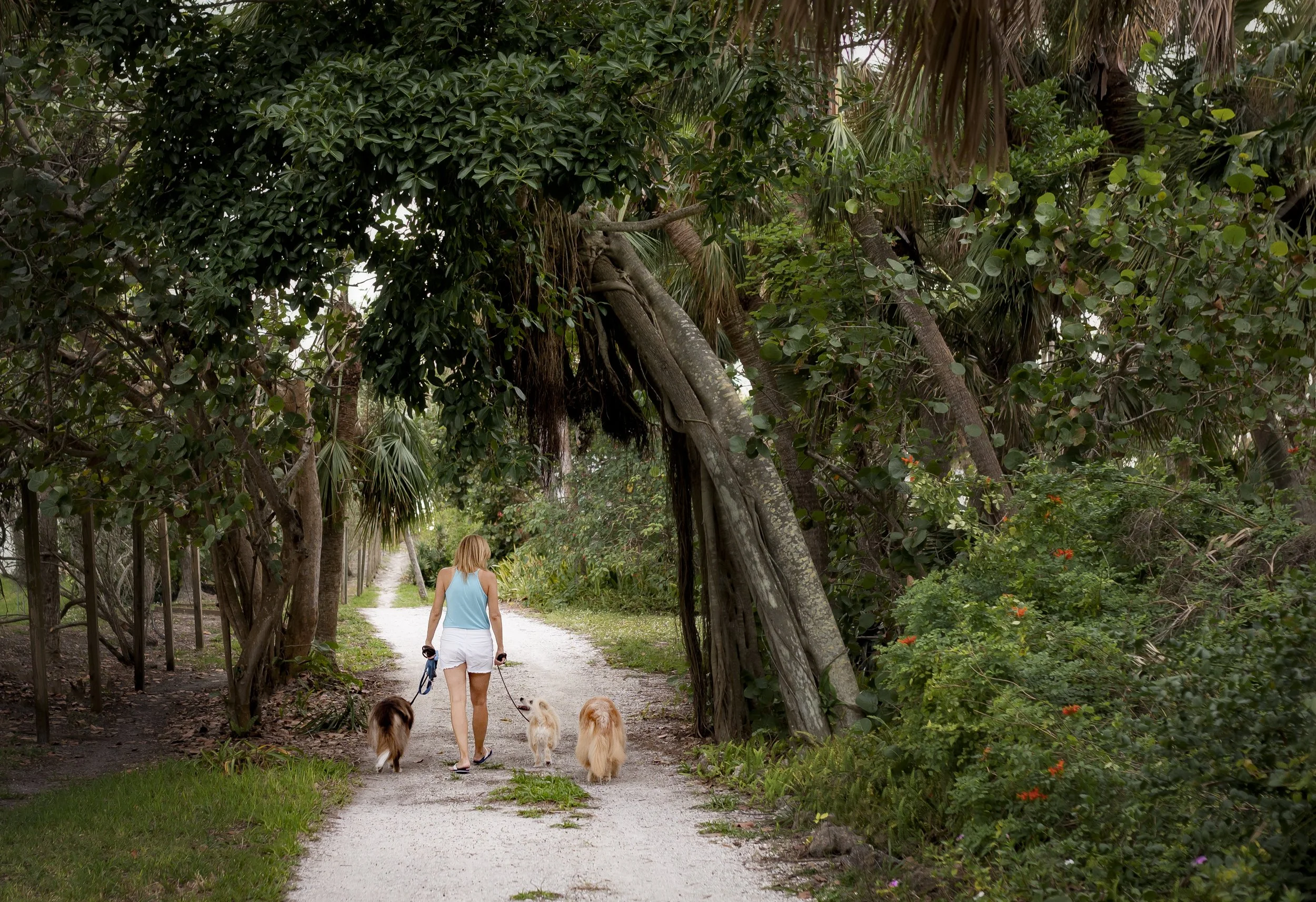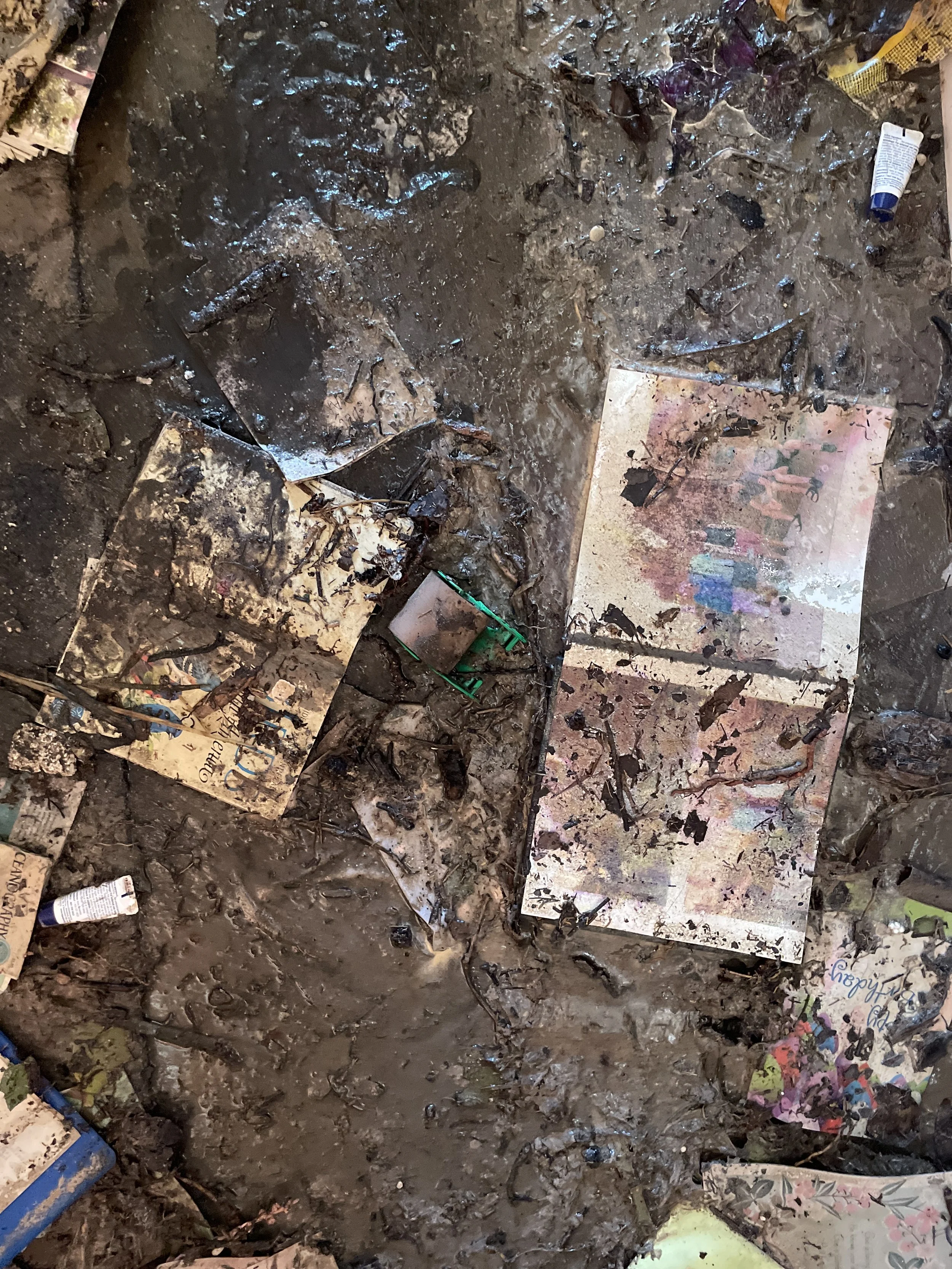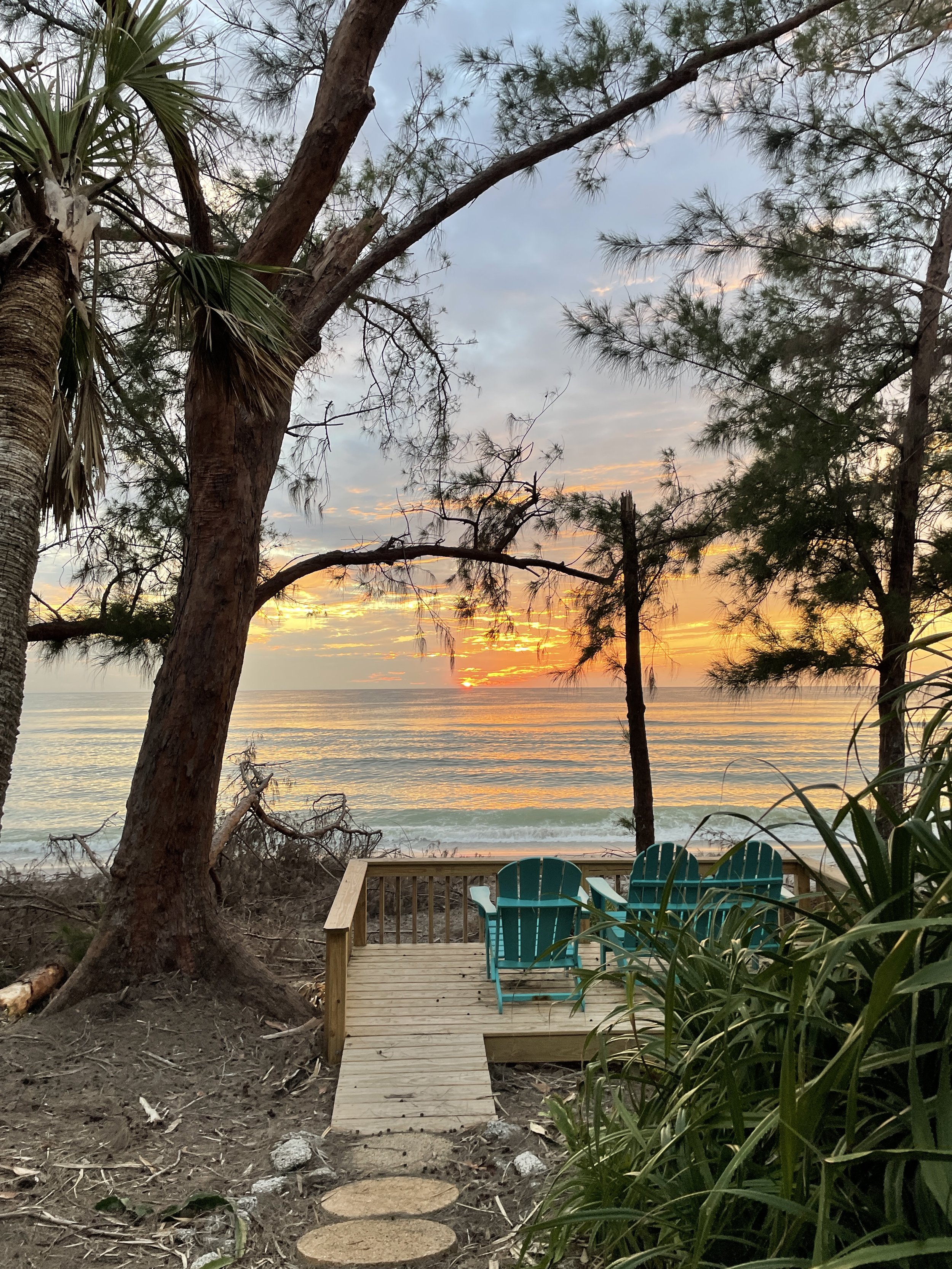When the news is your life
We’ve all done it. We hear a horrific story on the news and think, That would never happen to me. To my family. In my town. Until it does.
And just like that, one event turns your life into the news. You scour social media, scanning photos, and nodding along as you realize that what you and the entire world are looking at is, in fact, real. The stories you never want to hear. The mass school shooting. A scandal involving someone you admire. The extreme weather that devastates your community.
This happened to me.
House on Manasota Key that was destroyed by Hurricane Milton.
We had just finished cleaning up from Hurricane Helene when it was time to pack up and evacuate for Hurricane Milton. So many emotions. The predictions were terrifying—surges unlike anything we’d seen, catastrophic damage, lives lost. The notice didn’t need to be sent twice. We knew what we had to do: leave our home and everything we owned behind.
After all, it’s just stuff. Stuff can be replaced. Our lives cannot.
Southwest Florida isn’t just home to my husband and me. My mother-in-law, sister-in-law, and her husband also call this area paradise. We’re fortunate to live so close to each other. It’s all because of the matriarch—my mother-in-law’s first trip to the Gulf Coast was in the 1940s. Later, after she married and started her family, she came back. Her home overlooks the beautiful turquoise waters of the Gulf.
My pups and I on my Mother-in-law’s property on Manasota Key.
If you follow me on Instagram, you’ll know I regularly share photos from the beach. It’s become my favorite place on earth too. I’m so lucky to have it—beachfront property isn’t attainable for everyone. But back in the 1970s, real estate was much more affordable. Today, it feels like everyone longs to be here.
My favorite place on earth - the gulf coast.
Evacuation notices for Milton went out days before its landfall. Zone A is made up of properties near water, mobile homes, RV parks, and barrier islands—everything south of Tampa, which included my mother-in-law. It felt like Groundhog Day since she’d evacuated for Helene, too. Barely enough time to unpack before packing up again.
We all fled to the East Coast. No one expected the sheer number of tornadoes Milton spawned on its outer bands. We dodged that bullet, though just barely.
When you know something bad is coming but don’t know how bad, it’s hard not to stay glued to the news. Watching Milton inch closer to the Gulf Coast. Where would it make landfall? How high would the winds be? What would the surge be?
Tampa was spared the worst of the storm’s eye, and quietly, we were all grateful. It could have meant incredible devastation. Instead, Siesta Key and Sarasota bore the brunt. Surges are what cause the most destruction, and Ian taught us that back in 2022. The worst surge always happens south of the storm’s eye. As the hurricane spins counterclockwise, the water that was pulled out into the Gulf has to come back in. And it did.
Right into my mother-in-law’s home, and all of Manasota Key. A 10-foot surge battered this quaint little Old Florida key. The early videos were horrifying. No one could drive onto the key; roads were closed due to feet—not inches—of sand. Houses were flattened, windows and doors blown out, everything in the water’s way washed out to the Gulf.
After a day of cleaning, I snapped quick selfie showing the water line from the surge on Manasota Key. Estimates are that 10 feet or more came in from the storm.
I kept thinking, Surely not my mother-in-law’s house. The video I saw was south, so I spent hours searching social media, looking for someone who might have stayed and was near her home. Maybe they could tell us if there was anything left.
And then I found someone. We messaged back and forth until late that night. He promised to go by in the morning and send me photos. The reality was worse than I had expected. But still, I convinced myself—the part of the house I didn’t see in the photos was probably okay.
Anxious, we all wanted to go home. But the power was still out. Water had to be boiled. Trees blocked roads everywhere. The key was still closed, even to residents.
Sleep was hard. The more photos and videos I saw, the more horrified I became. If it was real, it was worse than anything I’d ever seen.
Finally, when we were allowed back on the key, I turned on my video camera, capturing the unbelievable scene before us. All I could say was, Oh my gosh, oh my gosh, oh my gosh. It was that bad. Furniture, appliances, sand, debris littered the yards. Manasota key was unrecognizable.
More destruction on Manasota Key. Pelican Shore cottages sheared in half by the surges.
When we got to my mother-in-law’s house, we couldn’t even get down the driveway. But the house was still standing. We pushed debris aside, walked to the front door, and held our breath as we turned the key to the front door. The moment of truth.
We were greeted with furniture shoved against the door, sand, debris, water, and sewage scattered throughout the house. Not just a dusting, but in some places, up to three feet of sand. Very little was salvageable. But we went straight to work, grabbing anything we could save. As we stepped over the debris, we found random things that triggered emotional reactions.
So many personal items, like this photo album of a family trip to the Grand Canyon, are unsalvageable.
My wedding invitation. A photo of one of the great-grandkids. My father-in-law’s book—he was an author. A broken trinket from our trip to Italy. So many memories. It was harder for my husband than for me—some of these things had been in his parents’ home since he was a kid.
For weeks, we cleaned, salvaged, documented, made phone calls to insurance companies, got estimates, and tried to process everything that needed to be done.
So many memories made here over the years. This was taken before the hurricanes.
It’s exhausting. Overwhelming. And surreal. I walked the beach and saw so many others who fared worse. Homes that were unsafe to enter, foundations shifted, walls collapsed. In some cases, homes simply caved in like a game of Jenga when you pull the last piece and the tower crashes.
Post-traumatic stress disorder is real. We had nightmares. Night after night, I dreamt the surge was coming and I couldn’t escape. My husband had sleepless, restless nights too.
For us, the emotions were a rollercoaster. Because my mother-in-law is in her 80s, it fell to us to handle the aftermath. But we didn’t lose our home, so at the end of each long, hard day, we got to go home, sleep in our own bed, take a hot shower, and eat a cold meal. She was never going home again.
Same spot as the photo above - after the hurricanes. This was taken during cleanup. All the trees, sand and deck are now gone.
I bounced between feeling heartbreak and gratitude. We saved a lot, but we lost a lot too. Starting over is never easy, especially when you’re in the later years of life. Through it all, as I helped sort and save heirlooms passed down for generations, childhood keepsakes, and even things we all take for granted, like clothing, I realized how much stuff we collect that can be replaced.
What was gut wrenching, was losing the photos that captured so many events - special trips, milestone birthdays, family gatherings. Memories. That can’t ever be taken away.
We have a long road ahead of us, but the most important thing is that we are alive and safe. And for that, I will always be grateful.








